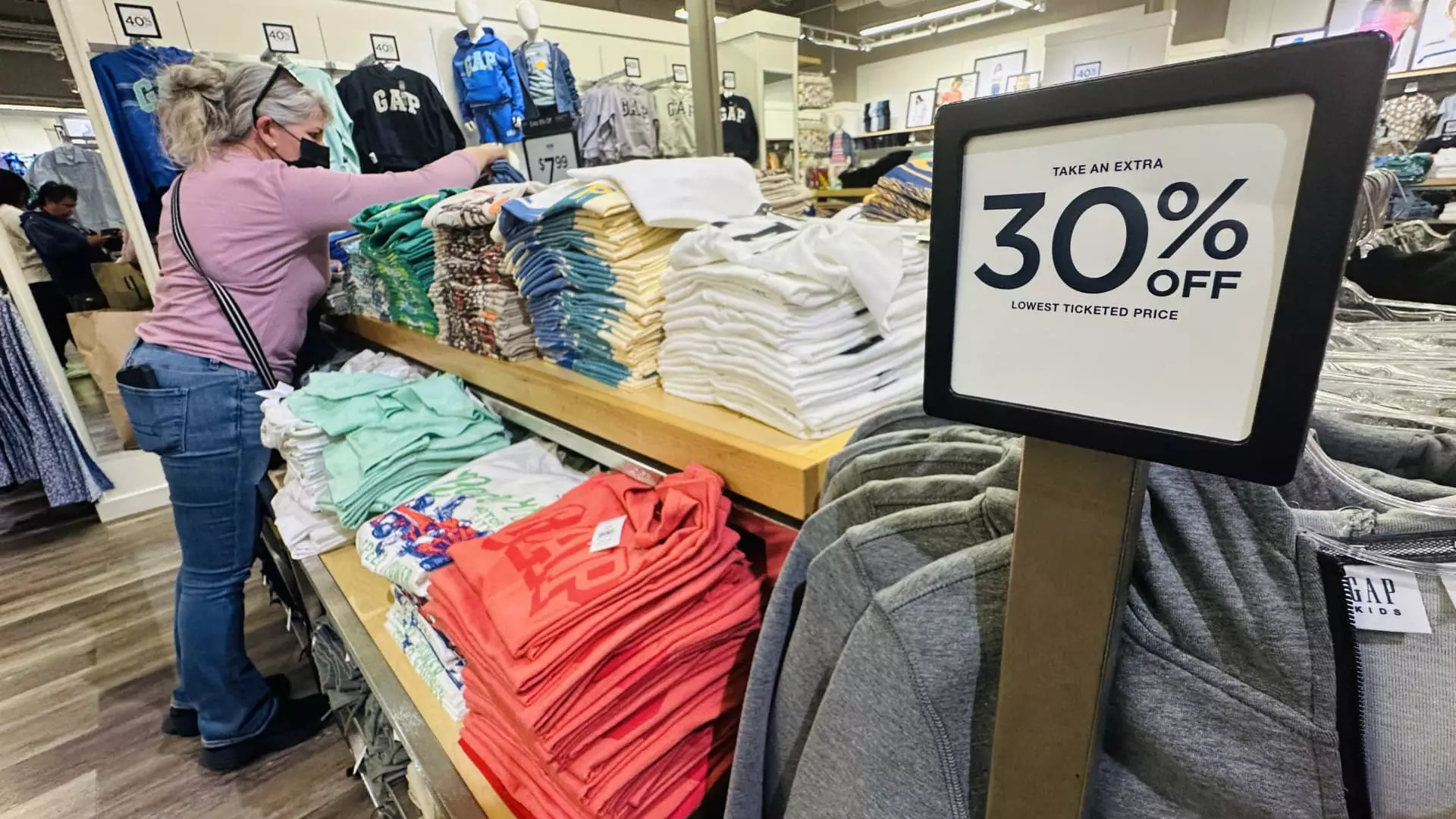In an era where economics and fashion intersect, the impact of tariffs on apparel is causing a seismic shift in consumer behavior. Recently, the U.S. has ramped up trade tensions, with predictions indicating that clothing prices could soar by as much as 64% due to new tariff impositions. This economic reality underscores a troubling truth: the trade war not only affects international relations but also significantly alters the daily lives and spending habits of average Americans. The decision to impose these tariffs may appear as a bold step towards protecting domestic interests, but it predominantly serves to inflate costs for consumers already reeling from inflation.
Breaking Down the Financial Ramifications
The apparel industry is in a precarious position, largely dependent on imports that account for an overwhelming 97% of clothing and shoes sold in the U.S. With tariffs like the recent staggering 145% levied on Chinese products, companies are finding themselves caught between rising costs and the need to maintain consumer loyalty. Basic economic principles dictate that the burden of these tariffs will inevitably trickle down to consumers. “Tariffs are a tax paid by the U.S. importer that will be passed along to the end consumer,” remarked David French of the National Retail Federation, articulating a sentiment that should resonate with anyone navigating the current retail climate.
Furthermore, an economic forecast from the Yale University Budget Lab suggests that the consequences of these tariffs will not be fleeting; apparel prices are projected to remain 27% higher in the long run. This alarming trajectory is set against a backdrop of growing consumer financial stress, showing that the apparel industry may soon become a luxury that many cannot afford.
The Middle-Class Struggle: A New Fashion Dilemma
The ramifications of these tariff policies are particularly acute for low- and middle-income classes, a demographic already working with tight budgets. According to recent studies, three-quarters of consumers are engaging in “trade-down” shopping behaviors, shifting their preferences toward secondhand or lower-cost options. The cycle perpetuates itself as consumers adjust their purchasing patterns in hopes of securing affordability while still expressing their identity through fashion. One can easily envision the fashion landscape transforming, where the previously coveted high-end brands become less accessible, compelling individuals to seek alternatives like dupes or consignment stores.
The troubling aspect of this shift is that it reinforces a culture of economic inequality. For individuals striving to maintain a semblance of style without breaking the bank, the rise of counterfeit products becomes even more enticing. As one fashion expert succinctly put it, if consumers cannot indulge in luxury brands, they often resort to purchasing cheaper imitations, thus feeding an underground economy ripe with fakes.
A Rippling Effect on E-commerce and Consumer Behavior
The recent revocation of the de minimis tax loophole, which previously allowed low-value imports to enter the U.S. duty-free, is just one more nail in the coffin for budget-conscious shoppers. E-commerce giants that thrived on affordable overseas goods will face significant logistical hurdles, translating to even higher prices intended for the average consumer. The unfortunate reality is that this punitive tax regime will encourage many to shy away from purchasing essential goods, restricting access to affordable apparel in the process.
This phenomenon extends beyond mere consumer preference; it permeates the economic framework. As clothing companies adjust their pricing strategies in response to economic pressures, a significant number of consumers are turning to secondhand options. Various surveys suggest an increase in appetite for re-commerce solutions, with predictions indicating that this sector will grow by a striking 55% by 2029. This shift is not merely a trend but a necessary adaptation in a world where brand loyalties clash with economic realities.
Resale Market Growth: A Silver Lining in Tariff Clouds?
While the growing embrace of secondhand shopping and the resale market reflects changing consumer priorities amidst rising tariffs, it also highlights a pressing issue: the lack of adequate supply to meet burgeoning demand. According to Julia Hughes of the United States Fashion Industry Association, the inventory in the secondhand market simply cannot satisfy the consumer’s needs. While consumers may be increasingly interested in sustainable fashion options, the industry is left scrambling to provide accessible alternatives.
The current scenario begs the question: Will we see a sizeable realignment in the fashion industry, one that supports a more equitable marketplace? Will secondhand goods become a permanent fixture in retail, rather than a mere stopgap solution to inflated prices? As we continue to navigate this complex interplay of fashion, tariffs, and economic hardship, one thing is clear: significant changes in consumer behavior are unfolding before our eyes. We stand at an intersection where the future of fashion hinges not only on style but also on survival.

Leave a Reply